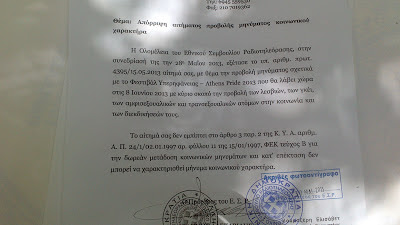Mr. President,
Secretary-General,
Distinguished Delegates,
Excellencies,
Ladies and Gentlemen,
I would like to echo the words of the Secretary General in highlighting the importance of this high level meeting.
The event is indeed timely.
It is ten years since the entry
into force of the UN Convention Against Transnational Organized Crime
and the Trafficking in Persons Protocol.
We are also three years into the life of the Global Plan of Action to combat human trafficking.
Today's forum offers a welcome opportunity for us to review
achievements, to examine challenges, and to chart a decisive course of
future action.
Although so much of human trafficking remains hidden, we know
that the international community confronts a crime stretching across the
globe.
This modern form of slavery creates millions of victims.
From
their suffering, this crime creates billions of dollars for the
criminals.
So far, 175 states are parties to the Convention against
Transnational Organized Crime and 154 to the Trafficking in Persons
Protocol.
Fifteen countries have ratified the Protocol since the adoption of the Global Plan of Action in July 2010.
I call on all Member States, who have not done so, to ratify and fully implement UNTOC and the human trafficking protocol.
The Global Plan of Action mandated UNODC to report on human
trafficking to help us better understand the global problem and how to
strengthen our collective response.
We did it in December last year, and then the report was discussed at a special meeting in New York.
It follows clearly from the report that we are dealing with a crime of the 21
st Century: adaptive, cynical, sophisticated; existing in developed and developing countries alike.
Against this background,
I should like to provide a
three-sided evaluation of the Global Plan: what we have achieved, the
challenges and the road ahead.
First, achievements.
Today, 83 per cent of countries have proper legislation to
combat human trafficking.
In 2009, before the Global Plan, this figure
was only 60 per cent.
What is encouraging is the number of countries in Africa and
the Middle East that have anti-human trafficking legislation.
This
number has doubled during the last three years.
In terms of criminal justice responses, the number of convictions globally has increased.
Indeed, 25 per cent of countries reported a marked increase in
convictions over recent years.
The remaining countries viewed the
situation as stable.
Moving to the challenges.
Thirty-nine Member States around the world still need to ratify the Protocol to reach its universal implementation.
Impunity is another issue.
Sixteen per cent of countries have
never recorded a single conviction for human trafficking. Overall
conviction rates are still low.
The full engagement of the Inter-agency Coordination Group
against Trafficking in Persons-ICAT-has also not been reached. At
present, the Working Group of this body, which is open to all, has only 6
UN agencies.
There are also problems with data collection and analysis.
The
2012 Global Report contained information from 132 Member States.
This
means 61 countries did not provide any information for the report
And perhaps most importantly, the Victims Trust Fund created
under the Global Plan has not been used to its full potential due to the
lack of adequate finances.
Although we have started to help victims of human trafficking
through the 11 grass-roots NGOs, at present, we cannot undertake a new
call for proposals.
For these reasons, the Global Plan of Action has taken significant steps forward, but to truly deliver on our mandate,
we
need:
-
Universal ratification and implementation of UNTOC and its protocol by Member States,
-
Increased commitment from all ICAT partners to dedicate time and resources to its activities,
-
Fresh contributions to the Trust Fund from governments but also other actors, and
-
Comprehensive data in order to understand the nature of this global crime.
Ladies and Gentlemen,
Between 2006 and 2009, the number of detectable cases of human
trafficking for forced labor doubled.
From 18 to 36 per cent. It shows
that more action against this crime is taken by law enforcement bodies.
However, we cannot afford to rest on past successes. Thirty-Six per cent is too low. We must aim much higher.
If I could emphasise one particular area, it would be the need for deeper cooperation.
Success against the traffickers can only come if we engage more fully in the elaborated mechanics of cooperation.
We need more sharing of best practices, greater mutual legal
assistance, more joint operations across borders, national strategies on
human trafficking linked to regional and international approaches, as
well as the cooperation of key stakeholders such as civil society, the
private sector and the media.
Ladies and Gentlemen,
Three years ago the Global Plan of Action gave the
international community a powerful sense of direction in the fight
against human trafficking.
We now need to recalibrate our approach.
But it is a question
of simply adjusting our present direction, not throwing away the
compass.
The goal remains the same. We must rid the world of the suffering caused by human trafficking.
In our modern societies, human trafficking is often a well
hidden crime; however, the good news is that it is now clearly visible
on the radar screens of governments, international organizations, civil
society, the business community, and the media.
Throughout the world, we stand in alliance across borders and politics due to a shared desire to reject this heinous crime.
In the spirit of that unity, let me suggest maybe an
inspirational, but realistic goal: a decade of concrete action to
eradicate this gross form of transnational organised crime from every
country and every region.
Let us do this for those alive today, but also for the generations of women, children and men who follow.
Thank you.
 Θέμα
Θέμα 
